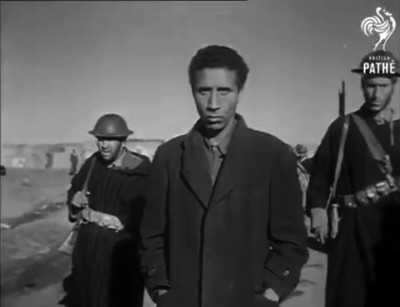From colonialism to anti-communism
When people today speak of urban riots they immediately think of French banlieus, Tottenham riots, or maybe LA riots, which are all case studies of the Western metropolis – on which we primarily focused our research. But instead of theoretical and research focus on the suburban riots in the Western hemisphere we wanted to highlight an example that links to the urban riots in the North Africa in 1950s, the period which can be seen as an important step in the general anticolonial struggle of that and next decade. One of the earliest examples of the urban riot took place in Casablanca, Morocco, in early December of 1952, in Casablanca. Interestingly, this event, which was in the later historiography seen as a milestone for Moroccan independence struggle, has received very little political, artistic and theoretical attention, or appropriation. There is a mention of this event in the catalogue Colonial Modern (HKW), and some articles report on segments or general context. At that time, the event received an extremely negative coverage by the local, French and also world press. It was seen as a clear indication of antagonism and growing hate between French settlers and nationalist Moroccans, where the racial tensions will necessary spread out.
Despite referred in some historical textbooks as important event, there is very little written on the event, thus I decided that the contribution to the archive of dissent can take a rather “negative” approach, that is, to make a comment on the representation and narrative that was circulated widely at that time. There is a short newsreels, a report done by American Universal, which takes a very peculiar line of interpretation (see newsreel bellow).
This newsreels, as many media reports at that time, does not tell you that the urban riots were triggered by a murder of Tunisian trade-union activist Ferhat Hashad in Tunis few days earlier, which implied the work of the secret organization of French settlers. However, it was this murder that triggered series of peaceful demonstrations, which was joined by different sections of populations and political organisations. Demonstration transformed into riots on the 7 and 8 of December, and Casablanca was the site of most stormy reactions. Protest there brought together trade union organizations, communist party, and Istiklal independence party members, who first walked together on the police station, where they were joined by many unemployed youth “Yaouleds” (yall-kids-forgotten), who also lived in the bidonvilles. In front of the station open clashes with the police and armed forces of protectorate started, while some protesters made their ways through the police cordons. In that moment the fire was opened a few hundred died in next minutes. While the newspapers report of 57 dead people, highlight goes to 7 on the side of police and Europeans, while others are not mentioned. In the aftermath of riot, arrests of youth and communists forces ensued, we can follow the shots and see the landscape of the bidonville, where the alleged communist plotters hid. The torture, and its effects, was openly displayed by camera, while further features of state of exception were implemented: a curfew, executions of rioters and suspects, and a ban on Communist Party and Istiklal national independence party. Furthermore, the King was sent into exile to Madagascar and the animosities within the Morrocan society strengthened. Riots had to be prevented, however it is clear –this anti-communist narrative points to it- that what was targeted was not really riots themselves, but more general solidarity and political coalitions among very diverse social groups and political organisations, even solidarity within a broader region of North Africa.
